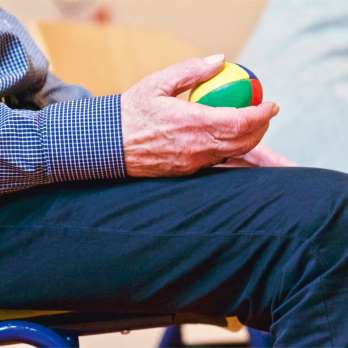Essential Tremor Treatment Options and Care
Essential tremor is a common movement condition that most often causes rhythmic shaking, especially of the hands. People may notice shaking while holding objects, writing, or performing fine motor tasks. This article explains how essential tremor is evaluated and treated, covering medical options, therapies, and how the nervous system is involved. It aims to clarify typical approaches to care and what to discuss with clinicians when considering treatment or local services for management.

This article is for informational purposes only and should not be considered medical advice. Please consult a qualified healthcare professional for personalized guidance and treatment.
What causes tremors?
Tremors are involuntary, rhythmic muscle contractions that can arise for many reasons. In essential tremor, the precise cause is not fully known, but evidence suggests a dysfunction in brain circuits that coordinate movement. Genetics play a role in many cases: a family history of tremor is common. Other conditions (metabolic issues, medications, or neurological diseases) can also produce tremors, so clinicians evaluate pattern, onset, and triggers to distinguish essential tremor from other causes.
How do tremors affect the hands?
The hands are often the most noticeable site for essential tremor, leading to shaky hands during tasks like drinking, writing, or buttoning clothes. Hand tremors can vary in amplitude and frequency and may worsen with intentional movement or stress. These symptoms can interfere with daily living and self-care. Occupational therapists can recommend adaptive utensils and techniques, but clinical assessment by a neurologist helps determine whether symptoms match essential tremor or another movement disorder.
Why do people have shaky hands?
Shaky hands may result from essential tremor, but the term can also describe tremor from anxiety, medication effects, low blood sugar, or Parkinsonian syndromes. Distinguishing features include whether tremor occurs at rest or during action, whether it improves with certain substances, and whether other neurological signs are present. A careful medical history, neurological exam, and sometimes basic lab tests or imaging help identify the likely cause and guide appropriate treatment choices.
What medical treatments exist for essential tremor?
Medical management is often the first line for essential tremor. Commonly used medications include beta blockers (for example, propranolol) and anticonvulsants such as primidone; both can reduce tremor amplitude for many patients. Botulinum toxin injections may be considered for head or voice tremors or focal hand tremors, though they can weaken nearby muscles. For persistent, disabling tremor, surgical options like deep brain stimulation (DBS) or focused ultrasound thalamotomy are available and involve specialized evaluation. Each option has potential benefits and risks that should be discussed with a neurologist.
How does the nervous system relate to essential tremor?
Essential tremor stems from abnormalities in brain circuits that involve the cerebellum and connected regions responsible for smooth, coordinated movement. These networks are part of the central nervous system, and their altered signaling produces the rhythmic muscle contractions seen as tremor. Understanding this helps explain why treatments target neural activity — whether with medication that modulates neurotransmitters, injections that interrupt muscle contraction, or devices/surgeries that alter brain circuit function.
What therapies and local services help with shaky hands?
Non-surgical therapies include physical and occupational therapy to improve coordination, strength, and adaptive strategies. Therapists can teach task-specific techniques, recommend weighted utensils, wrist weights, or other assistive devices to reduce the functional impact of tremors. Behavioral approaches such as stress reduction, improved sleep, and limiting stimulants (for example, reducing caffeine) may help. If considering advanced treatment, look for neurologists, movement disorder specialists, or centers offering DBS and focused ultrasound within your area to discuss evaluations and referrals.
Conclusion
Management of essential tremor combines accurate diagnosis, individualized medical therapy, rehabilitative support, and—when needed—procedures that target abnormal brain circuits. Choices depend on symptom severity, impact on daily life, and personal risk tolerance. Patients and caregivers benefit from discussions with qualified clinicians and local services that specialize in movement disorders to tailor a treatment plan that addresses shaky hands and related challenges.






